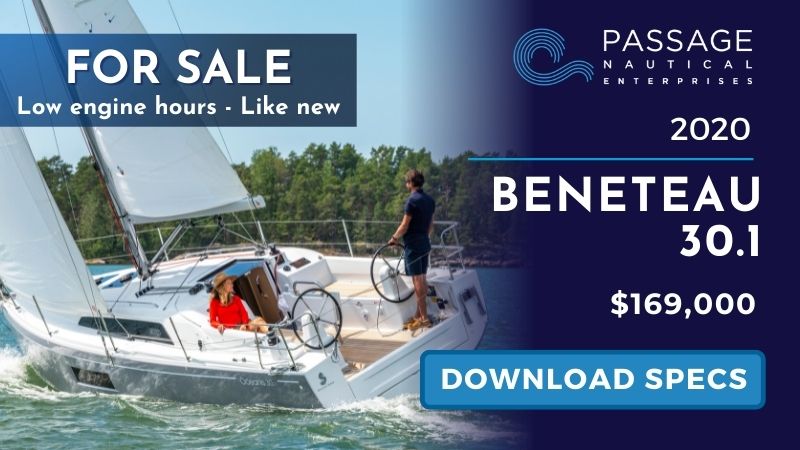
Yucca, Not Mayan, Wins Classics at Rolex Big Boat Series
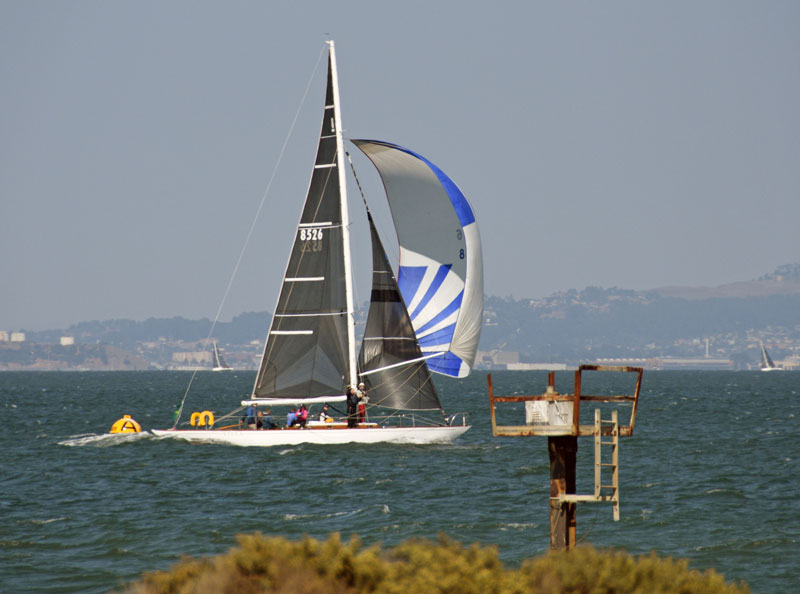
Last week, the skippers in the Classics division of September’s Rolex Big Boat Series received this message via email from Susan Ruhne, the regatta chair for host St. Francis Yacht Club: “The OA [organizing authority] received a scoring inquiry from Beau Vrolyk, skipper of Mayan, on the Monday after the regatta concluded. The PRO for your course followed RRS 90.3c and did the investigation, including working with the US Sailing Rating Office and the US Sailing Head of Offshore Ratings to review. We have now re-scored the regatta using the ORCez Time Correction Factor.
“This means that Yucca won the class and Mayan finished in second. There are also some changes to results in individual races, but no other overall place changes. All can be viewed in Yacht Scoring.
“We apologize for the time it took, but the PRO and OA (all volunteers) were working through all the steps to ensure we did this correctly. We have many lessons learned that we will implement for the 2023 regatta.”
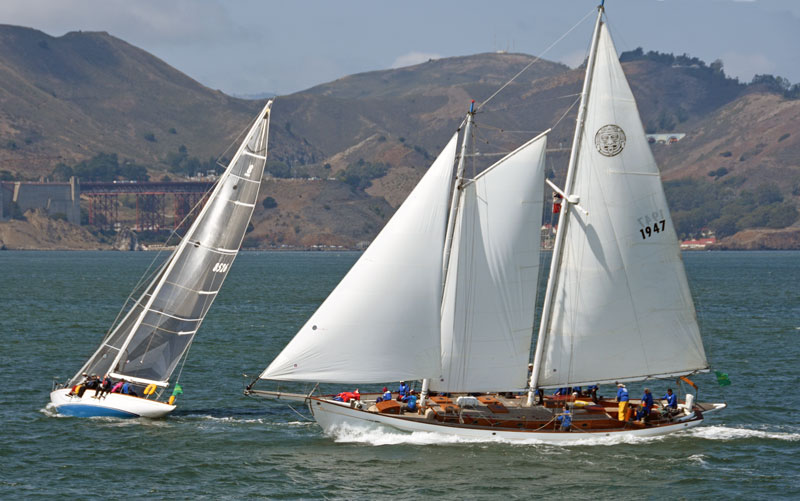
“In the early hours of Monday morning,” said Beau Vrolyk of the day after the RBBS concluded, “I was struck by a feeling of unease regarding the score.” Yucca had finished all four races first, but Mayan had corrected out overall. Beau tried to rescore the regatta himself. “I didn’t trust my numbers either,” he told us. “So I filed a scoring inquiry.”
As Beau wrote to Mayan’s very large crew, “I was surprised that we had won every race. While I know we sailed well, it didn’t feel like we were that dominant. I found what I believed was an error in the wind and course mix used for the Classic Class. I have already called Hank Easom and congratulated him on winning.”
Beau said that he and Michael Zolezzi, owner of Yucca, and Hank Easom, the helmsman and previous owner, would meet up for drinks and to swap trophies. “I wouldn’t want a trophy I didn’t win. Doing the right thing is always the right thing to do. It was just a simple error — the regatta was a tremendous success.”

A belated congratulations to Michael, Hank and the crew of Yucca, and kudos to Beau and Stacey Vrolyk for setting a great example for the rest of us yacht racers. This sport is self-policing, and good sportsmanship should always win out over the trophy hunt.
Hands Up for the Baja Ha-Ha USCG Presentation in San Diego — Everyone’s Invited
The Baja Ha-Ha kicks off in two weeks, and preparations are in full swing for the seminars and presentations that are held in San Diego ahead of the October 31 departure.
The Poobah is calling for a show of hands from those who plan to attend USCG Search and Rescue Specialist Douglas Samp’s presentation on Saturday, October 29, at 4 p.m. at the West Marine Superstore, San Diego.
While this is a Ha-Ha event, it’s so important that the Poobah is extending an invitation to members of the CUBAR, a smaller, motor-yacht version of the Ha-Ha, as well as the general public. But it will be very helpful for us and West Marine to have a general idea of who is planning to attend.
The presentation will be moderated by the Poobah, who will ask Samp questions that pertain especially to recreational boats on the high seas. Also on hand will be Eugenie Russell, who was the skipper of the boat that was sunk by a whale in the 2009 Ha-Ha. That the entire crew was rescued in textbook fashion is a testament Eugenie’s skill, the skill of her crew, and the great skill and resources of the Coast Guard.
By the way, who was the Command Duty Officer the day of the rescue? None other than Specialist Samp, who obviously has a wealth of SAR experience.
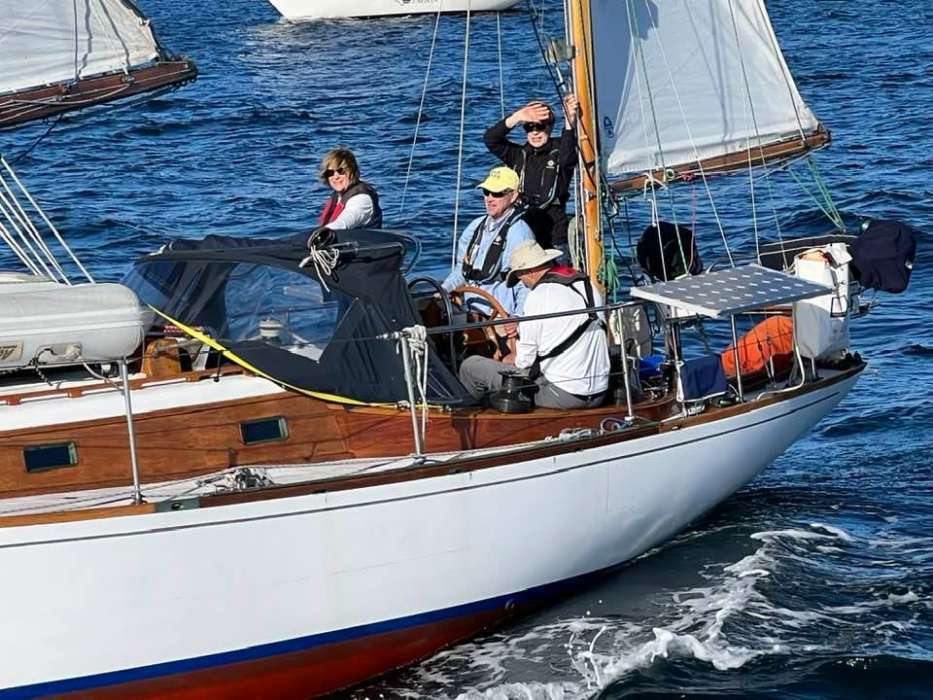
What questions will be addressed?
1) What is the best way to reach the Coast Guard? Satphone, VHF, SSB, email, text, EPIRB, InReach, Iridium GO!?
2) If by satphone or text, what are the best numbers?
3) What are the pros and cons of having a two-way communication device such as an InReach or Iridium GO! as opposed to a more rugged one-way device such as an EPIRB? Captain Russell will have firsthand insight on this question.
4) When does a situation qualify for needing to call the Coast Guard? I’ll give you a hint from the last SAR Ha-Ha presentation: When in doubt, always call the Coast Guard. Their resources are funded, and they are eager to help.
5) Does the Coast Guard work in conjunction with the Mexican authorities? Spoiler alert: Yes, they do. In fact, Specialist Samp was in Ensenada the other day and commented on how much Mexico has upped its SAR game recently.
And Mexico has been helpful before. About five years ago we had a serious medical emergency onboard Profligate during the Ha-Ha and contacted the US Coast Guard. Not only did they provide medical advice, they contacted the Mexican navy, which was eager to come 150 miles offshore to offload our patient. As the seas were rough and the patient was no longer suffering excruciating pain, the decision was made to meet up at Bahia Santa Maria. Before we could even get our anchor down, the patient and Doña de Mallorca were offloaded to a high-speed Mexican navy vessel and rushed to the clinic in San Carlos. It all ended well.
Obviously, the onus of safety at sea is always on the skipper and crew of any vessel. That said, it’s great to know that the world’s most capable SAR team is ready, willing and able to help. So the Poobah thinks it’s incumbent on all skippers to know about that resource and how to access it.
The Poobah hopes to see as many of you as possible at the West Marine Store at 4 p.m. on Saturday, October 29, in San Diego, and that you’ll give an indication that you might possibly be there. Please respond to [email protected].
Rare Buying Opportunity: Beneteau Oceanis 30.1 — As New
Oceanis 30.1 with low engine hours and little use. Compare this to a new 30.1 which will cost you an extra $50,000. A great family boat with great performance. Call for an appointment 510-236-2633.
Rent Control Comes to Bay Area Floating-Home Marinas. Are Liveaboards Next?
After an Alameda houseboat marina proposed raising berth rates this summer, a series of events at both the city and state level have led to rent control for the majority of floating homes — about 500 — in the Bay Area. Alameda also considered offering tenant protections for all liveaboards on any vessel in city waters, but will take the next year to study the idea.
Both an Alameda and a California rent-control bill have been heralded by some people in the liveaboard community, and met with opposition from marina owners and managers, many of whom said they felt excluded from the process of crafting legislation.
As the housing crisis continues to put pressure on the maritime ecosystem, people who live aboard boats, as well as marina owners, are being affected in a variety of ways, and in some cases are becoming polarized against each other. The on-the-water life that many people have enjoyed for decades is being redefined in the frenzy of the housing market.
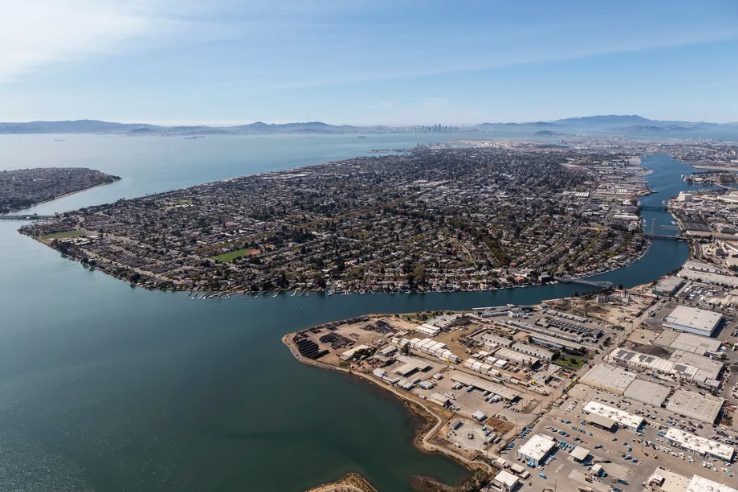
Proposed Liveaboard Protections in Alameda
There are two distinct but related issues at play: the debate over floating-home rent control, which is now a statewide bill on the books (though it applies to only three Bay Area counties), and the proposal to extend tenant protections to all liveaboards in Alameda.
After purchasing Barnhill Marina and Boatyard from the namesake Barnhill family in late 2021, the new owner, Amar Narang and Valley Investments LLC, announced a rent increase by an average of about 30%, which they say would still be below market-rate berth fees. Set against an industrial zone, Barnhill is the only floating-home marina on the Oakland Estuary, and everyone seems to agree that Alameda and Sausalito represent vastly different markets for floating homes.
Responding to the increase in April, Alameda extended the city’s rent-stabilization ordinance and COVID-19 eviction moratorium to approximately 60 residents, according to the Mercury News. In July, the Alameda City Council held a meeting to discuss amending the rent-control ordinance, which included the term “other maritime residential tenancies,” the Alameda Post reported. This meant all liveaboards, and not just floating homes.
“Without any public hearing or consultation with boat marinas, or solicitation for any input, the city retroactively included liveaboards into the [ordinance],” Kris Leverich, the commodore of the Aeolian Yacht Club, which has several liveaboards, told us.
“After first receiving notice from the city in mid-June that they must immediately register as landlords and comply with shoreside housing regulations, we thought, ‘This must be a mistake.’ All of the marinas and affected yacht clubs mobilized a response locally with supportive boaters to push back.” Leverich helped form the Alameda Marine Coalition, which he called an informal group representing marina managers and owners.
At a mid-July meeting, the Alameda City Council voted to defer the liveaboard-protection question for one year to undertake further study, but the non-floating-home liveaboard protections were granted to vessels at only Barnhill, and no other Alameda marinas.
At the July meeting, “100% of public attendees from the boating community decried the disaster which would unfold if marina managers effectively lost control of their harbors,” Leverich told us. “No public speaker spoke in favor of the measure.”
“[Harbormasters] had some legitimate concerns,” Michael Rousch, a special counsel with the City of Alameda who was involved in negotiations this summer, told us. “They need to have the ability to deal with the situations with liveaboards as they occur. Our intent is to see if we need to draft local legislation, and draft it in a way that doesn’t impair their ability to run the marina.”
With an election approaching, the City of Alameda’s stance on liveaboard protections might change with a new council. Rousch commented, “We’re hoping that the new city council knows that [marina managers] exist as one of their constituencies, and that they’ll just pick up a phone or shoot us an email.
“If they had done that to begin with, it would have headed off a lot of conflict.”
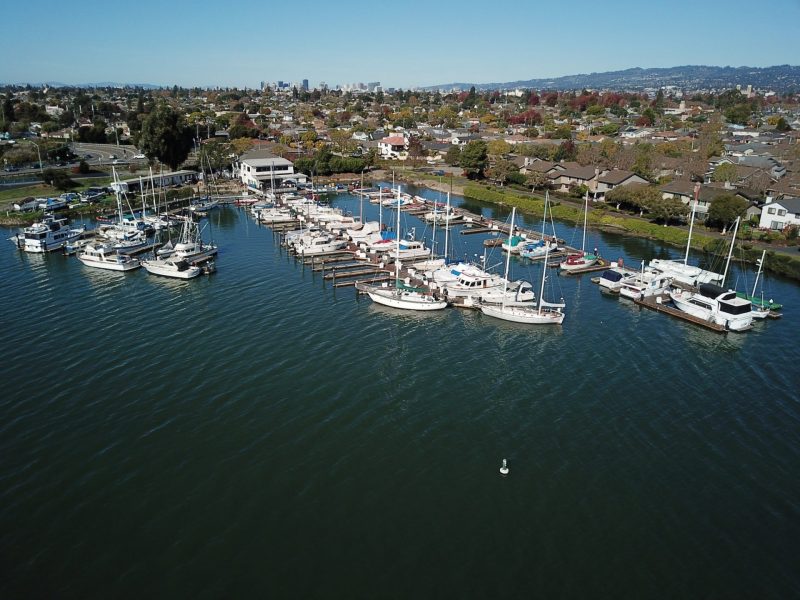
The potential Alameda ordinance was proposed at the same time that longtime liveaboards in Oyster Cove Marina in South San Francisco were given notice to evict, showing two extremes faced by a portion of the liveaboard community — some people have no protection as renters, while others now have broad shielding of their status as tenants.
Regarding the Alameda proposal, Leverich told us that, “From a practical and legal standpoint, [liveaboard protections] by the city would lead into a quagmire of conflicts with maritime law, and likely jeopardize not only the viability of recreational marinas in Alameda, but give every marina in the Bay reason to reconsider extending liveaboard privileges.
“Pursuing boating as housing is a dead end, and it’s dangerous in a number of ways,” Leverich added. “Given the housing crisis, we need to have alternative ways of looking at vulnerable people on boats and reducing risks rather than amplifying them.”
Rent Caps for Floating-Home Marinas
Signed into law in late September, California bill AB 252 imposes rent control on nearly 480 floating-home berths across Alameda, Contra Costa, and Marin counties, and will cap the amount a marina owner can increase berth rent per year to 3% plus the cost-of-living adjustment, or 5%, whichever is lower. According to one floating-home manager, AB 252 would also prohibit marinas from raising berth fees when a floating home is sold to a new owner.
“We’ve been advised that being prohibited from increasing berth fees for new owners is unconstitutional, because we own the property and it would be a deprivation of use of our own property,” Becky Smith, the property manager at Waldo Point Harbor in Sausalito, told us.
AB 252 said that “There is no known opposition” to the bill, though a number of floating-home marina owners and managers have told us that they emphatically object to additional rent control. (In 2019, California bill AB 1482 limited annual increases on all homes, whether on land or sea, to no more than 5% plus any change in the local Consumer Price Index, or 10%, whichever is lower.)
“We didn’t know anything about the legislation until the very last minute; we found out when it was presented to the Assembly. There was no type of conversation,” Smith told us.
“There’s no wrong that needs a right,” said Chris Tellis, the harbormaster at Yellow Ferry Harbor in Sausalito, which has 22 floating homes. “AB 252 is faux progressivism. Over the decades, houseboat values in Marin have skyrocketed, while we kept the berthage rate in check under the terms of the leases. Houseboat berthage on a square-foot basis is cheaper than recreational marinas. At Yellow Ferry Harbor, we have leases that go to 2051. No one has ever heard of rent control in the richest county in America, and that’s not even residential housing,” Tellis said, adding that the average berth fee at Yellow Ferry is around $1,500.
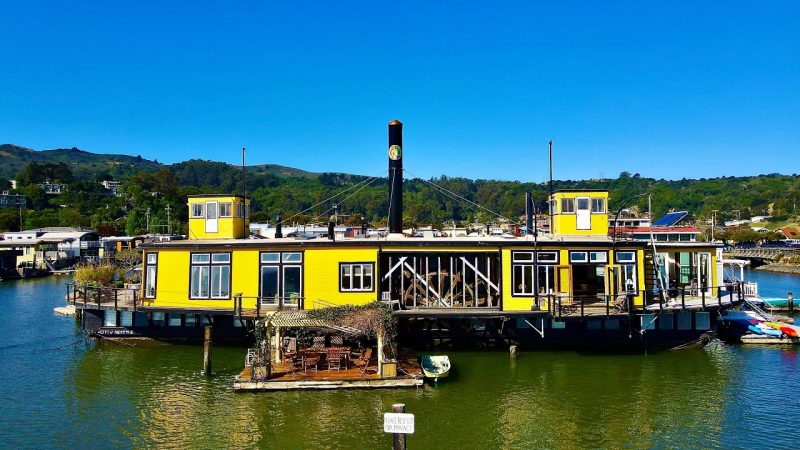
We’ve heard estimates that the median price of floating homes in Sausalito hovers around $1.5 million, which is roughly the median home price in the Bay Area in general. In some cases, floating homes are second homes or rental properties.
AB 252 asserts that people living in floating homes are “one of the most economically diverse populations in our region, including many seniors and others living on low and fixed incomes. Floating homes provide some of the only naturally occurring affordable housing for healthcare workers, crafts and trades people, artists and civil servants.”
With 282 homes, Waldo Point Harbor in Sausalito is the largest floating-home marina in the Bay Area, and one of the largest in the country. “We have 38 low-to-moderate-income floating homes that we subsidize ourselves,” said Becky Smith.
(We asked Assemblymember Mia Bonta, who authored AB 252, and whose district encompasses Alameda, Oakland and San Leandro, to what extent floating homes represent affordable housing. [We also asked why AB 252 covers only three counties, and doesn’t include San Francisco, San Diego, etc.] We did not hear back from her office.)
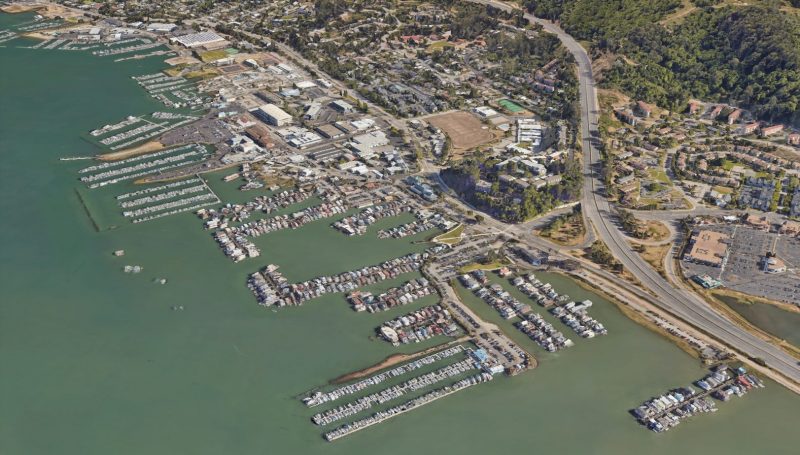
Both a floating-home owner and a few floating-home harbor owners and managers told us that their way of life is potentially under threat — the homeowner said they could not afford an increase in berth fees, and that the equity that they’ve accrued is in danger, while the owners and managers said they could not sustain their businesses if they weren’t able to raise berth fees.
“There’s a misconception some residents have that the harbor makes so much money, and we don’t,” Becky Smith said, “If this bill is enforced, we may have to sell the harbor due to financial concerns.”
“This bill passes on the real property value to the tenants while reserving the taxes for the landowners,” Chris Tellis said. “We have already spent $30k to redo the entrance and parking landscaping; the budget was around $200k. But we are tabling these plans,” wrote Tellis in a letter.
“Unlike other rent-control ordinances, there is no provision to pass through the costs of improvements or adaptations to climate change. The Bay is expected to rise 1-3 feet in the lifetime of our leases. This will require raising the docks, utilities, and parking lot — basically rebuilding the entire marina. AB 252 assumes the marina owner is going to singlehandedly shoulder the cost of rising sea levels on behalf of all the tenants. That’s not going to happen when the marinas are not even allowed to keep up with the current round of inflation.”
Paraphrasing a floating-home owner: “It’s ridiculous to assume that people who have floating homes have the means to pay for climate-change infrastructure.”
A Super-Quick Survey on Sewage Pumpout for Boaters
If you own or use a boat, you’ll often have to deal with the question, “Where can we pump out?” This super-quick survey asks about the pumpout facilities that are, or are not, at your home marina and whether you ever use pumpout services at other marinas.
Hopefully the survey results will generate improved access to pumpout stations. Either way, it’s quick, and your participation just might help.
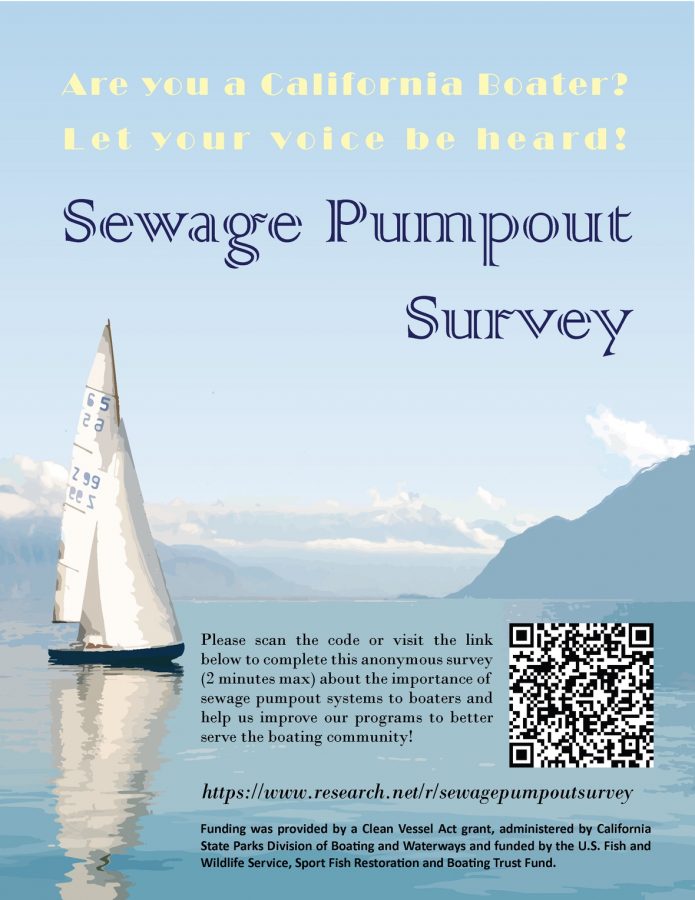
Sign Up for Good Jibes for a Chance to Win One of Five Spracht BoneHead Sport Headsets
This month we’re celebrating the one-year anniversary of our Good Jibes podcast by giving away five Spracht BoneHead Sport headsets. Just sign up for our weekly Good Jibes newsletter to enter. Five winners will be drawn at random from people who sign up from October 1 to October 31. The BoneHead bone-conduction headsets go around your ears, not in them, so if needed, you can hear what’s going on around you while you listen to your Good Jibes podcast or your favorite sailing songs. Sign up here.

